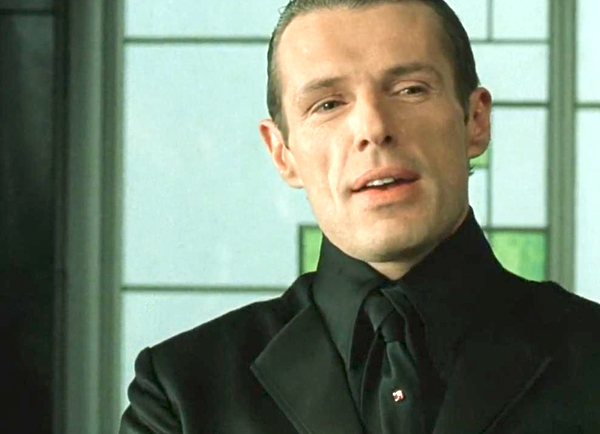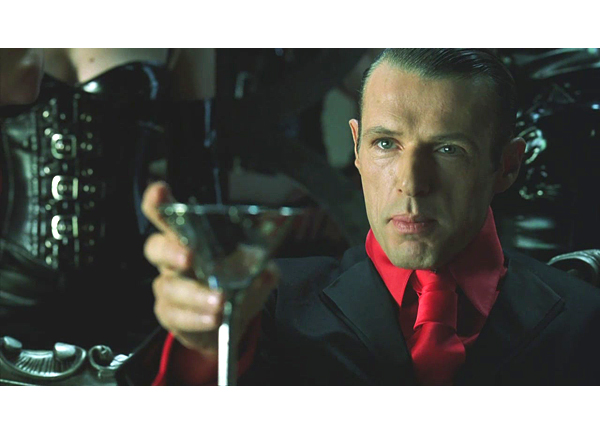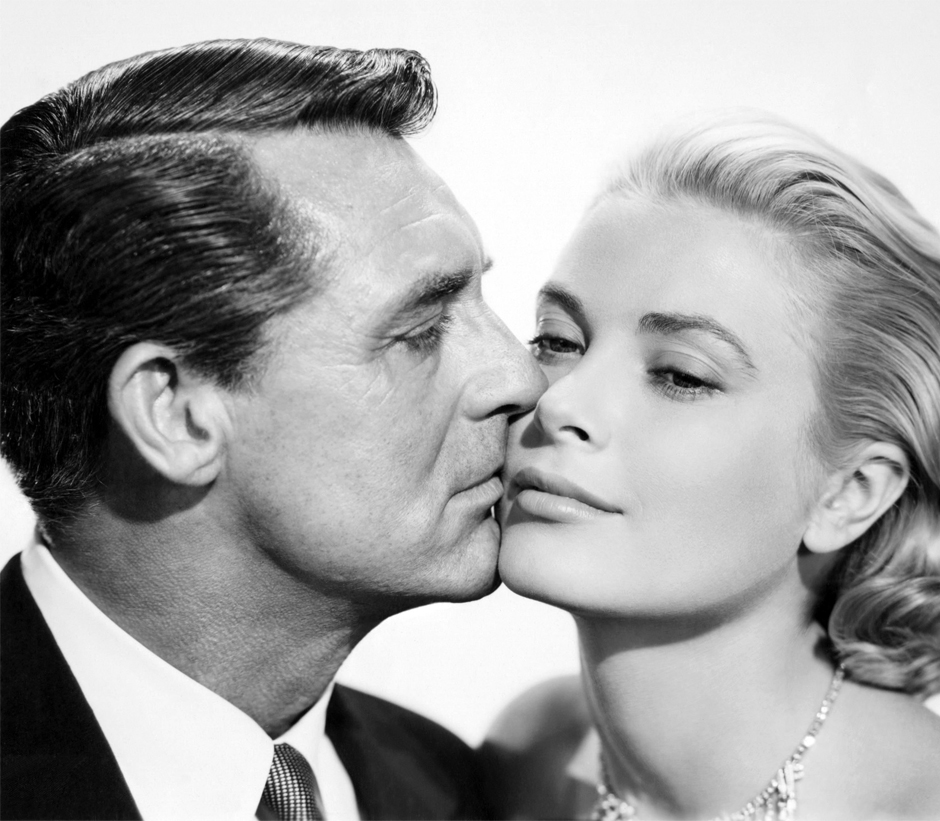In search of The Merovingian
[Guest Post]
So, with almost a quarter of a century of working life in the rear-view mirror as an accountant in the UK public services sector, it should come as no great shock to discover that this writer is something of a traditionalist when it comes to office attire for gentlemen. In twenty-four completed years therefore – and with the exception of what may be described as “non-uniform” days, the standard is of course a suit, complete with tie. For many years friends and relations were seemingly surprised at this but it is now second-nature. The nouveau trend toward the open collar has thus far been rejected, naturally. It would be just plain wrong.
The only other option was to stay as faithful as possible to the traditionalist image while introducing an element of allowable individuality into the mix. It came as something of a sad reflection that every single one of those necktie knots was a double Windsor, the ubiquitous knot of choice of the British Armed Forces of course. It had to go in favour of something else, but what? And what the blazes does this glacially sedentary preamble have to do with the search for a long-deceased French monarch?
‘The Merovingian’ was of course one of the several levels of digital adversary encountered in the Matrix trilogy of films. The character was a rather dapper Frenchman, whom the lady readers will no doubt remember but as the same scenes tended to feature his on-screen wife Persephone – played by Monica Bellucci in a series of figure-hugging outfits – the gents may struggle to place him in the haze of memory. Anyway, the aforementioned virtual Gaul was not simply a well-spoken nemesis to the story’s eventual hero, but sported not one but two arguably ground-breaking ties, of all things.
This fact was yielded following deployment of this new-fangled interweb thingy in the search for that elusive “something else”, and started something of a mini-fascination. If nothing else more complicated, the art of necktie knot-tying was of sufficient merit for further study, surely? After all, how can one properly prepare future generations for what lies ahead without knowing the difference between (say) a Kelvin and a Four-in-hand knot, or if unable to tell their widdershins from a hole in the ground?
That last bit totally blew this writer’s mind by the way. It turns out that in 2000 Cambridge scholars1 pondered the mathematical notation associated with necktie knots, and came up with what is ostensibly a new language along with the notion that there are 85 ways to tie your tie. Novel. In 2014, Messrs. Sandberg, Patterson and Hirsh determined that there are in fact 177,147 ways2 AND confused the issue further by describing moves in terms of “turnwise, widdershins and under”.
In the intervening period and in a distinctly underground manner mirroring that of the struggle depicted in the previously-mentioned Matrix films, a movement started seemingly coincident with the first appearance of the Frenchman in the 2003 “Reloaded” instalment. In it he wore a black ensemble which included a tie the like of which not seemingly seen before. [Picture below]

Now, this started a scramble among fans to determine what it was and – more importantly – how to copy it. There are two versions to the end of this portion of the tale, one distinctly more interesting than the other, so let’s start with that. If one were to search online for representations of the knot depicted above, a slew of links, diagrams and videos would hove into view with a giddying array of answers. Crucially, and seemingly because not everybody is so precise in their requirements, what one is shown is in fact a mix of right, not quite right and just plain wrong answers – mostly wrong it must be observed. A fellow designating himself as ‘Ediety’ in cyberspace succeeded where other pretenders failed and formulated instructions to recreate the knot. Importantly, for this microcosm of modern culture anyway, this triggered the birth of new and previously undiscovered ways to construct necktie knots – including the previously unheard-of breed of ‘reverse’ knots, i.e. using the thin end of the tie not the broad end.
In what must be observed as the ‘quite disappointing’ other end of the spectrum of answers lays this factoid – to recreate the ‘first Merovingian’, follow these steps.
1. Set-up the tie with the seam facing outward;
2. Tie a double Windsor;
3. Loosen the knot and take the loop back over the head;
4. Rotate the tie through a half-turn, place back over the head and re-tighten.
Upon testing this fact, it is not uncommon for howls of derisive laughter to result, possibly from oneself at the discovery that something so apparently elegant and cutting-edge is in fact just a backwards tie but more likely from the observing partner/spouse who will take great delight and joke-making material from the occasion.
Certainly upon closer inspection of the various and increasingly grainy images of the original creation, Ediety’s Knot – and as such it has been named – is a faithful reproduction. Case closed? No. What of the other, the mysterious ‘Revolutions’ instance?
It seems apposite at this juncture to pause to nod imperceptibly in the direction of some true modern-day pioneers of the art. In addition to Mr. Ediety (real name Luke Housego) who has been quoted by Jeffrey Eldredge3 as being the inspiration for creating the eponymous knot there are of course YouTubers, individuals and channels no less, dedicated to exposing ‘every kind of knot known to man’, which have served to bring to the attention of the masses some different tying methods – and ‘different’ in this case refers to a range that covers ‘something more complex than a four-in-hand’ to some outright bizarre creations, such as the “pekada”. Don’t look, you’ll have to wash your eyes out afterward, it’s just awful.
It is in the melee of these various artists that the solution to the origin of the second Merovingian is most likely found. And ‘most likely’ is the closest we can get at this point, shamefully. Below is the target:

The distinguishing features of this are few and make it tough to identify. All there is to go on really is the double wrap-over, which is set quite low creating the illusion of a more typical knot at its head. Speculative articles suggested this was created by simply starting with an ‘Onassis’ but then using the narrow end to create the wrap effect, and there is one video online that uses this logic to depict the ‘Merovingian Wrap’, which tucks the excess back through the shirt. Ewwww. The helical winding suggests left-to-right motion and there is a hint of fabric behind the top section with the gem – which must be some sort of pin, purely for decorative purposes. The quest led by way of the a series of knots by a gentleman called Eric Glennie to a creation called the ‘Floating Spiral’ which has the same look bar a single helical winding at the front. The conclusion therefore is that this is in fact a ‘Double Floating Spiral’, i.e. rather than passing the broad end through a single loop it is passed through two. Given that the previously-mentioned Mr. Housego named his creation, does this automatically render the Revolutions knot the one true Merovingian?
The curious thing about such a quest is that it opens the eyes to possibility the like of which was not contemplated, not because it is not possible to conceive but more reasonably one falls victim to the worst kind of lazy logic in the world – which is that “the way it is is the way it has always been” blinds us. As a result, the search became more absorbing than the result for me personally. I found countless different methods but also a new set of preferences and what passes for acceptable. As a personal pursuit therefore, the target is to tie no Double Windsors in 2015 and not to repeat a method in the same week, but to maintain a standard which passes muster in the stuffiness that is the English office environment. In addition, I found I have commenced experimenting – not with such lavish creations as some would attempt – but with winds, loops and tucks to create subtle yet different effects. So you see “the Merovingian” isn’t so much of a design as it is a concept.
I’m still looking for my own personal Merovingian. Will you look for yours?
Footnotes
1 85 Ways to Tie a Tie – Thomas Fink & Yong Mao
2 On Tie Knots – Anders Sandberg, Meredith L. Patterson & Dan Hirsh
3 Jeffrey Eldredge, the creator of the Eldredge Knot – “Youtique Bridal”, May 2013






